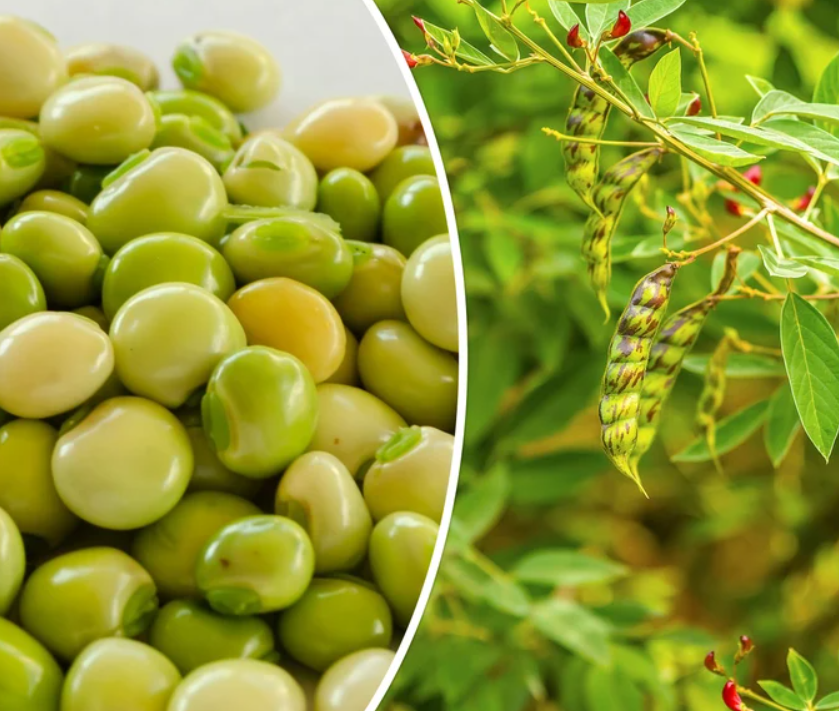Scientific Name: Cajanus cajan.
Family: Fabaceae.
Chromosome Number: 2n = 22.
Importance
It is a popular pulses crop and it is a rich source of Protein. It is cultivated in tropical and semitropical regions. It is an important legumes crop of rain fed and semi-arid tropics and it can grow as a single crop or intermixed with cereals. It enriches soil through symbiotic nitrogen.
Location
Andhra Pradesh , Gujarat , Karnataka , Madhya Pradesh , Maharashtra and Uttar Pradesh are major Pigeon pea producing states in India.
Soil Type
● It grows on a variety of soil. It gives best results on fertile and well drained loamy soils.
● The saline-alkaline or waterlogged soils are unfit for its cultivation.
● It can grow successfully on soils having pH ranges from 6.5 to 7.5.
Varieties
● AL-15 : It is a short duration variety, matures in 135 days. Pods are borne in clusters. It gives an average yield of 5.5 q/acre.
● AL 201 : It is an early maturity variety. It matures in about 140 days.
● PAU 881 : It is an early maturing variety. It matures in 132 days.
● PPH 4 : First Arhar hybrid in Punjab. It matures in 145 days. It gives average yield of 7.2-8 q/acre.
● UPAS-120 : It is an extra early maturing (120-125 days) variety. The average yield is 6-8 quintals per acre. It is susceptible to sterility mosaic disease.
● AL 882 : It is a dwarf and early maturing variety. The variety matures in 132 days. It gives an average yield of 5.4qtl/acre.
Land Preparation
● Prepared land by taking one deep ploughing followed by two or three times harrowing.
● Planking should be followed after each ploughing.
● It cannot withstand water logging conditions, prepared in such a way that water stagnation should not take place.
● Crop Rotation : Follow crop rotation of Arhar with Wheat or Barley or Safed Senji or Sugarcane.
Time of Sowing
● Sowing of seed crops in the first week of June is recommended for obtaining higher seed yields.
Source of Seed
● Obtain nucleus /breeder’s/ foundation seed from source approved by seed certification agency.
Sowing Method
● Sowing is done either with seed drill or by plough in furrows.
● The depth of seeding is 5 cm.
Seed Spacing
● Row to Row-60 to 75 cm
● Plant to Plant – 25 to 30 cm
Seed Rate
● A seed rate of 12 -15 kg per hectare is sufficient.
Seed Treatment
● Treat the seed with Carbendazim (Bavistin) or Thiram at the rate of 3 g per kg of seed before sowing.
Fertilizer Management
● For good yields application of ten cart loads of farm yard manure followed by 25 kg of nitrogen and 50 kg of phosphorus is recommended.
● The fertilizer should be drilled at the time of sowing so that it will be placed at 10 to 15 cm deep in the soil and also to the side of the seed.
Weed Management
Chemical weed control
● Take one hoeing, about three weeks after sowing and another hoeing about six week after sowing.
● Apply Pendimethalin @ 1Lt/acre in 150-200ltr of water as pre-emergence herbicide within 2 days after sowing, followed by hand weeding six to seven weeks after sowing.
Water Management
● The crop is mostly grown rainfed, after germination, need two light irrigation which should be given at:
(45-50 days) after sowing.
(75 days) first at flowering. → 2nd at the pod filling stage of the crop.
Diseases Management
1. Wilt
Caused by : Fusarium oxysporum
Controlled by : Best control is to plant disease resistant varieties like Amar, Azad, Asha.
2. Stem rot
Caused by : Phytophthora drechsleri.
Controlled by : This disease can be controlled by planting resistant varieties. There should be good drainage in the field and the plants should be protected from stem injury.
Pest Management
1. Pod borer
Controlled by : Spray the crop with 1.5 litre Endosulfan 35 EC or Monocrotophos 36 EC per ha, in
1000 litres of water.
2. Tur pod fly
Controlled by : The pest can be controlled by spraying the crop with 1.5 lit of Endosulfan 35 EC or
Monocrotophos 36 EC per hec, in 1000 lit of water.
Harvesting
● For vegetable purposes, harvest plants when leaves and pods are of green colour.
● For grain purposes, when 75-80% pods turn brown and dry, it is the right time of harvesting.
● Delay in harvesting results in damage of seeds. Harvesting can be done manually by cutting stems or by Machine.
● After harvesting, keep bundles of plants upright for drying purposes.
● Grains are removed from plants by threshing or by traditionally beating plants with sticks.
Post – Harvest
● Grains of harvested crops must be well dried before storage. And take care to avoid the pulse beetle infestation in storage.
Yield
● With use of improved technology of agronomic practices pigeon pea may yield about 25-30 q/ha from irrigated condition and 15-20 q/ha from un-irrigated condition (depending upon maturity group of variety and climate) and 50 – 60 q/ha of sticks for fuel, as well.

